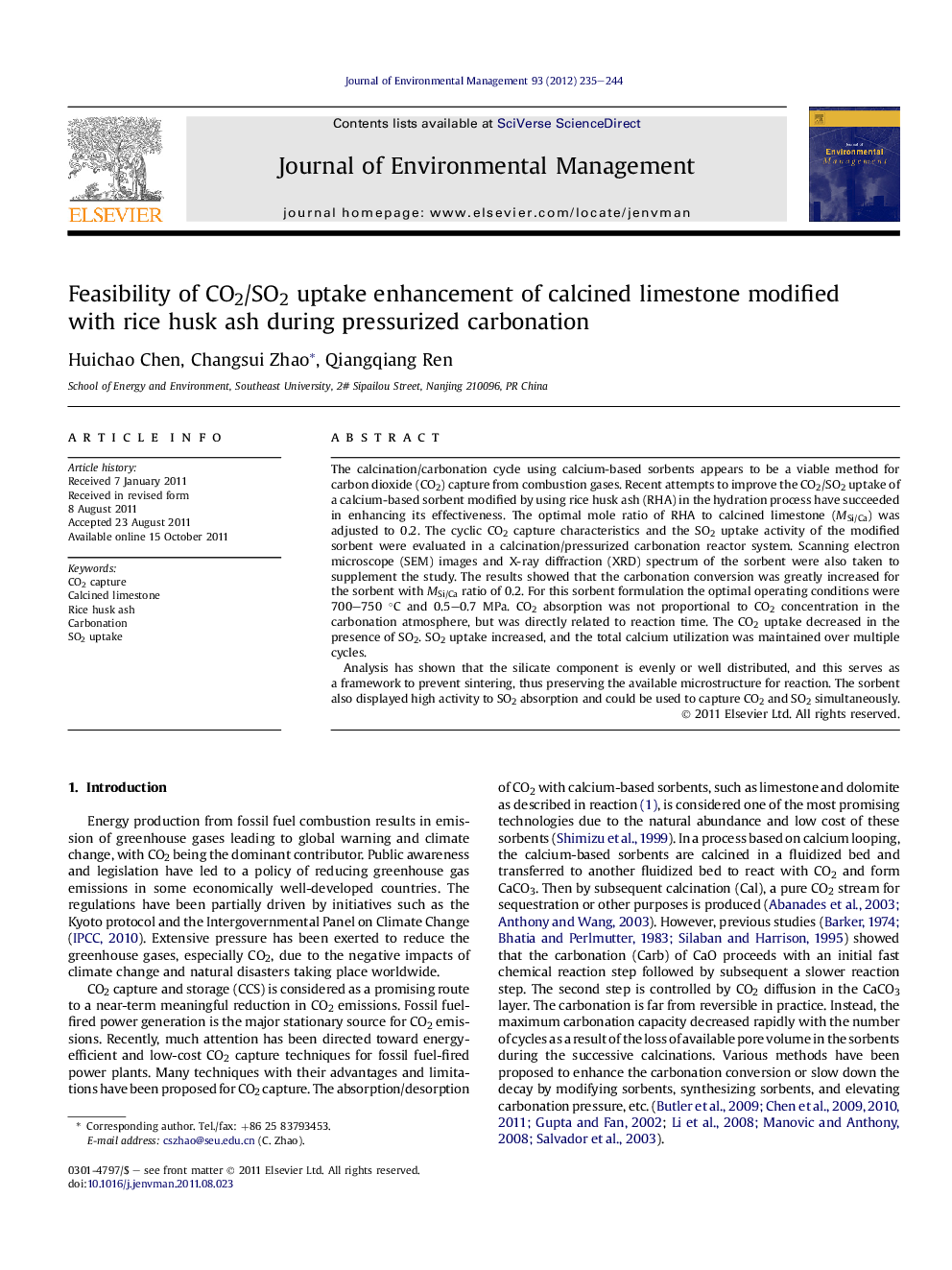| Article ID | Journal | Published Year | Pages | File Type |
|---|---|---|---|---|
| 1056985 | Journal of Environmental Management | 2012 | 10 Pages |
The calcination/carbonation cycle using calcium-based sorbents appears to be a viable method for carbon dioxide (CO2) capture from combustion gases. Recent attempts to improve the CO2/SO2 uptake of a calcium-based sorbent modified by using rice husk ash (RHA) in the hydration process have succeeded in enhancing its effectiveness. The optimal mole ratio of RHA to calcined limestone (MSi/Ca) was adjusted to 0.2. The cyclic CO2 capture characteristics and the SO2 uptake activity of the modified sorbent were evaluated in a calcination/pressurized carbonation reactor system. Scanning electron microscope (SEM) images and X-ray diffraction (XRD) spectrum of the sorbent were also taken to supplement the study. The results showed that the carbonation conversion was greatly increased for the sorbent with MSi/Ca ratio of 0.2. For this sorbent formulation the optimal operating conditions were 700–750 °C and 0.5–0.7 MPa. CO2 absorption was not proportional to CO2 concentration in the carbonation atmosphere, but was directly related to reaction time. The CO2 uptake decreased in the presence of SO2. SO2 uptake increased, and the total calcium utilization was maintained over multiple cycles.Analysis has shown that the silicate component is evenly or well distributed, and this serves as a framework to prevent sintering, thus preserving the available microstructure for reaction. The sorbent also displayed high activity to SO2 absorption and could be used to capture CO2 and SO2 simultaneously.
► Modified sorbents with a mole ratio of Si/Ca of 0.2 are effective. ► The modified sorbents show high activity in both CO2 and SO2 capture. ► CaSiO3 and Ca2SiO4 provide a stable framework inhibiting deactivation of CaO. ► Reduced reaction time results in low CO2 uptake, but retards sorbents’ sintering. ► High cyclic CO2 uptake is achieved at 700–750 °C and 0.5–0.7 MPa ► CO2 uptake decreases with SO2 presence, with total calcium utilization maintained.
